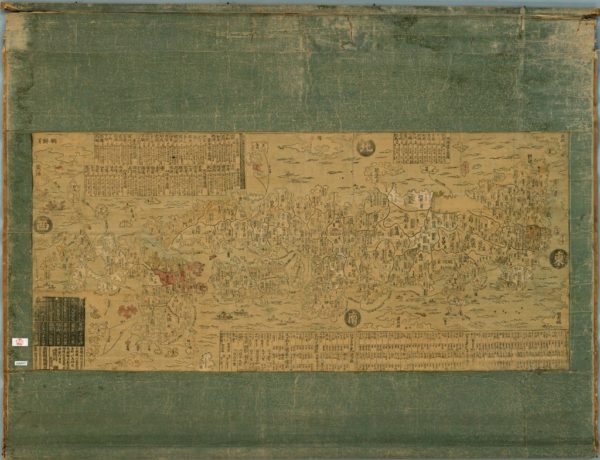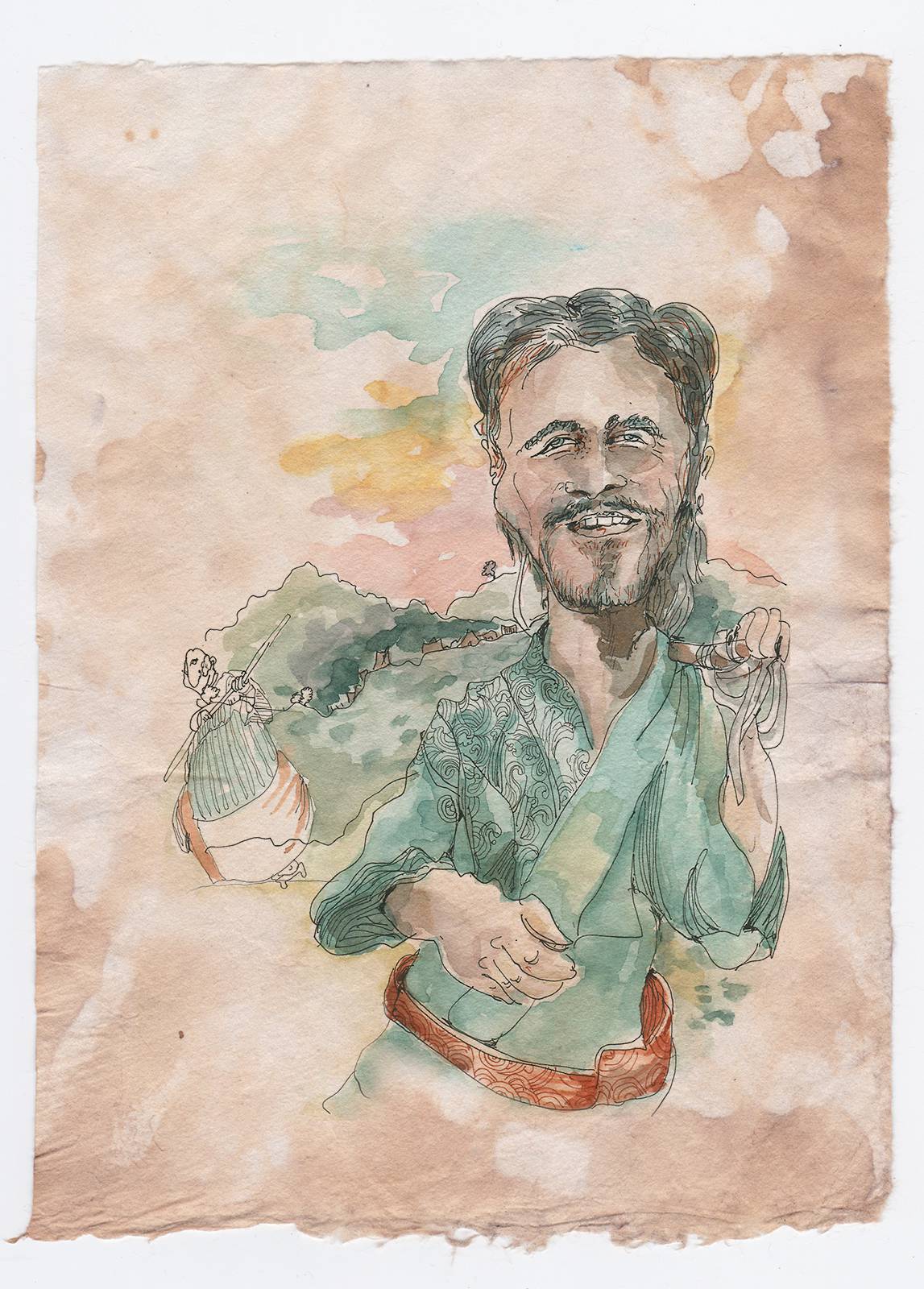A man brought a present of sweets today with his two daughters. I had little to give in return, so I brought out a small piece of paper and drew their faces. The girls were delighted, asking for me to draw their father and mother as well. I do not know the purpose of their visit, but having a family here was a welcome reprieve.

Ancient map of Japan
This picture map of Japan was published at the end of the 17th century by the cartographer Ishikawa Tomonobu, an ukiyo-e artist and mapmaker. On it are the names of feudal lords and their wealth. Also indicated are post stations on highways such as the Tōkaidō, running from Edo (Tokyo) to Kyoto, the distances between stations, and popular venues.
Read moreOn a rainy spring evening, I returned to our house after a day with the Minatoya family. The roads were empty, as men and women alike stayed inside and out of the weather. When I opened our door, I saw an extra pair of shoes, ones I did not recognize. Voices laughed from inside, near the fire; a visitor had come calling with a gift of Japanese wine. They make it with rice here, as with so many other things. I was not in, so he shared the bottle with Fadrique, my boy. When I returned, they were in a merry mood, and clearly Fadrique’s tongue was loosened by the drink; I did not know his grasp of the Japanese language was that much improved. Bowing apologies, the man left soon after I returned.
What Fadrique told the man of my affairs, I do not know. The climate surrounding us namban and Christians is getting more dangerous. It is lucky that I did not leave any of my papers out in the open, though I do not think the Japanese man can read Portuguese, or even my handwriting. I am increasingly worried; it is only a matter of time before we are targeted. This island, my freedom, is not all I dreamed of.


